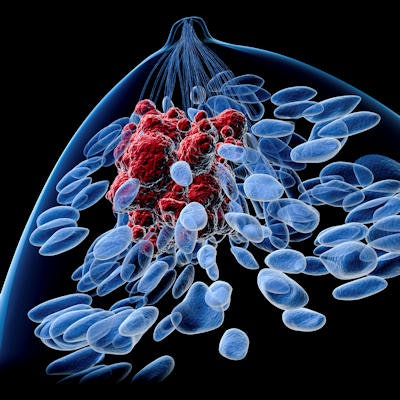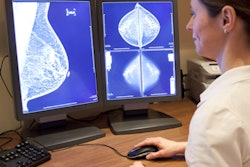
Research using analog mammography has shown that a woman's breast tissue density can be affected by reproductive factors such as when she first had children or when she began menstruation. But does this association hold up if the images are acquired with digital technology? California researchers sought to find out.
Associations between reproductive factors and mammographic density measured with full-field digital mammography (FFDM) images are similar to those from prior studies using digitized film-screen mammography, and on different FFDM systems, according to a study published in the June issue of the American Journal of Epidemiology.
The results bode well for women with film-screen prior images who are now being imaged with digital technology, which means most women since FFDM is now the standard of care at most facilities, wrote a team led by Stacey Alexeeff, PhD, of Kaiser Permanente Northern California in Oakland.
"Recently, we and others have shown that quantitative mammographic density measured on processed digital mammograms is strongly associated with breast cancer risk, with a similar direction and magnitude as the associations found when using film mammograms," the group wrote. "However, there is a need for large-scale studies to verify the comparability of the associations between reproductive factors and quantitative mammographic density measured on FFDM to those established using digitized film mammograms."
Risk booster
Breast density is strongly associated with breast cancer risk. In fact, epidemiological studies have found that women with high breast density have four to six times higher risk of breast cancer than women with low breast density, according to Alexeeff and colleagues.
But most of these studies have used digitized film-screen mammography, despite the fact that over the past decade FFDM has largely replaced analog, the group noted. So the researchers sought to investigate whether mammography results are comparable across studies in women with dense breasts using FFDM compared with film-screen priors -- and whether there may be differences among FFDM systems (Am J Epidemiol, June 2019, Vol. 188:6, pp. 1144-1154).
The study included 24,840 screening-age white women between the ages of 40 and 74 who participated in Kaiser's Research Program on Genes, Environment, and Health. The women underwent screening FFDM mammography between 2003 and 2013, on mammography systems from either Hologic (84%) or GE Healthcare (16%); these images were then compared with their film-screen priors.
The group assessed any associations of the number of children delivered, age at first child's birth, age at first menstruation, and menopausal status with percent density of the women's breast tissue. A radiologic technologist measured the women's tissue density using Cumulus density software (Canto Software, San Francisco; originally developed at the University of Toronto). Most of the women were postmenopausal (81%).
Overall, the study found that reproductive factors were associated with quantitative mammographic density measurements taken with the software and imaged with FFDM and that these associations were consistent with results on digitized film-screen priors. (Menopausal status had the strongest association, as density decreases with age.)
The researchers found the following associations:
- Premenopausal women and those with no children had the highest breast tissue density.
- Women who were 40 and older at the time of the birth of their first child had higher density tissue than women who had children when they were younger than 40.
- Women who began menstruation at 16 or older had higher tissue density than those for whom menarche began younger.
The team also found that the two different FFDM systems performed comparably.
"Our findings demonstrate the robustness of quantitative mammographic density measurements across FFDM and film mammography platforms," Alexeeff and colleagues wrote.
More research
The study did have its limitations, including a lack of racial and ethnic diversity due to the fact that the research was secondary to a genome-wide association study that included only white women, the group noted. Therefore, even though these study results show that FFDM can be trusted to identify the same density patterns as film-screen when reproductive factors are taken into account, more research is necessary.
"As mammography platforms rapidly evolve with new technological advancements, investigators studying mammographic density may face additional challenges in the interpretation of new mammographic density measurements in a research context," the authors concluded. "Thus, it is important to compare and validate these new measurements with regard to the established associations between mammographic density, risk factors, and breast cancer risk."




















